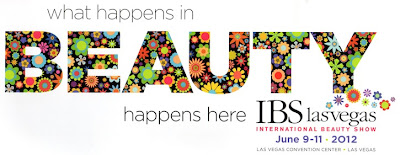As you know, Atelier Emmanuel added skin care to its menu last month and is making Yon-Ka its flagship skin care line. I’ve used Yon-Ka in the past, but this seemed like a good time to get a refresher on the products. So in early June I went down to Los Angeles to attend a comprehensive 3 day training. I had an amazing experience with all the hands-on experience. Because we got to receive facials, I really got a reminder of how soothing, relaxing and beneficial Yon-Ka products are!
“Yon-Ka gives life to skin.”
A little information about Yon-Ka
One of the taglines of their company is that “Yon-Ka gives life to skin.” As a premier skin care brand, Yon-Ka focuses on Safety, Quality, Efficacy, Authenticity and Passion. The basis for all their products are non-synthetic, natural essential oils, plant extracts and marine extracts. The products are vitamin intensive and free of both preservatives and artificial colorants. Their products are almost all paraben-free (and always have been). The few products that have paraben have much lower quantities than is standard to other products. Even these will be paraben-free by 2013. The only colorants used are food grade.
Yon-Ka is a funny name when you first see it. The first part of the name, “Yon”, refers to a river in China that was a symbol of rejuvenation. Yon also phonetically sounds like “ion” particles, which are thought to enliven us. “Ka” in Egyptian mythology was “the part of eternity contained in each person”. Together as Yon-Ka they symbolize continual rejuvenation, harmony and balance of body and spirit.
Yon-Ka is a French family based company started in 1954. Two sisters, Francoise and Catherine Muhlethaler, have been running the company for more than 40 years, since 1968. Based in Paris, France, Yon-Ka is distributed in over 40 countries.
The foundation of Yon-Ka Skin care products is plants. The heart of most of their products, what they call the “quintessence”, consist of 5 essential oils which work synergistically:
Lavender: calms, soothes
Geranium: helps to balance the skin oils
Rosemary: heals, stimulates, increases oxygenation, detoxifies, firms, antiseptic
Cypress: strengthens the skin, creates good circulation
Thyme: works as an antiseptic and astringent
My training in LA

We were taught two facials during the training, the Intermezzo and Le Grand Classique. The Intermezzo is a mini-facial. In my opinion, it is not in-depth enough, especially because there are no extractions involved. Our version of a mini-facial is the Soiree Facial, designed for those who want to freshen their appearance before going to an event. It’s a more in-depth and includes some extractions, but you won’t come out with any redness.
Le Grand Classique, however, is a very nice and effective facial — and it should be, since it is Yon-ka’s signature treatment! From start to finish it is filled scents and sensations building on one another so that, in the best of ways, the whole experience feels longer than an hour and a half.
3 Standout Yon-Ka Products To Try
Along with the history of Yon-Ka and the facials, they presented the entire product line. That was a lot of information! And of course in these classes the way that instructors present the products, everything sounds like magic and you want to try them all. Yon-Ka is good about only offering products that have a real purpose and real effectiveness; so each one has its place.
However, I am going to mention 3 standout products that are really worth trying. These are the ones that I was probably most excited about during the training. They are suitable to a wide range of skin types.
Phyto-Contour
A lot of eye crèmes don’t do the magic. This one actually works. It has an invigorating scent and you can see help with puffiness within 1/2h. Repeated use will diminish dark circles as well.
Masque no. 1
They say that it is really hydrating, moisturizing and refreshing, and it’s true! When you rinse it off, your skin has better color and no longer feels tight or tired. It’s clear, penetrating, but light enough for everyone. It’s multi-purpose too: you can leave it on as an overnight treatment for extra hydration and it won’t stain sheets or pillows.
Crème 11
Crème 11 treats redness from such things as broken capillaries, waxing, shaving, and acne. It’s supposed to prevent ingrown hairs, too. It’s anti-bacterial and anti-inflammatory. It’s great for clients going back to work that want to get extractions. Using it along with a masque after extractions takes care of all the redness. I’ve had a colleague try this product for some chronic redness on her cheeks, and she has seen an improvement.
Have you had any experience with Yon-Ka products? Let us know what you think in the comments below. Never had a facial and wondering what all the fuss is about? Come in and get one! They are great for men just as much as women.
Alisa has been an aesthetician since 2000. Her approach to skin care is influenced by the Russian approach where the skill of your aesthetician is paramount and the use of product is focused on their effectiveness. For Alisa, the key to proper skin care is, foremost, diet and lifestyle. The ingredients for a good facial are the right diagnosis, the right selection and use of products, and the massage techniques used to help products penetrate efficiently.


























.jpg)




